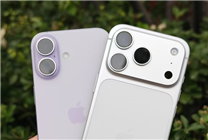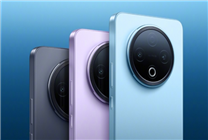iPhone 17 vs. iPhone 17 Pro: Is the Price Difference Worth It?
Summary
- The iPhone 17 offers impressive features at a more affordable price compared to the Pro model.
- For most users, the additional $3000 for the Pro version may not justify the benefits.
- Key areas of comparison include body design, performance, camera capabilities, and battery life.
As consumers assess their options for the latest iPhone, the decision between the iPhone 17 and the iPhone 17 Pro raises a vital question: is the premium price of the Pro version really justified? Both models flaunt a 6.3-inch display, yet the Pro begins at 8,999 yuan—a hefty 3,000 yuan more than the standard version. After extensive hands-on testing, the conclusion is clear: for the majority of users, that extra cost is unwarranted.
Design and Build Quality
The first differentiating factor noticed upon unboxing is the weight. The iPhone 17, while built with a classic aluminummidframe and glass back panel, weighs in at a light 186 grams. Users will feel comfortable holding it for prolonged periods. In contrast, the Pro model, thanks to its unified aluminum body and integrated cooling system, tips the scales at 204 grams, noticeably bulkier for pocket carry.
Although the Pro version boasts a refined finish—featuring a frosted back that reduces fingerprints—the practicality diminishes when protected by a phone case, rendering the aesthetic differences moot. The standard version also offers a vibrant color selection, making it less susceptible to wear and tear. As both models are built with glass, replacement costs for accidental damage remain fairly similar.
Performance Analysis
Both devices are powered by Apple’s latest A19 chip, but the Pro model features enhancements like a higher GPU core count and a specialized cooling system. Benchmark tests indicate that while the Pro version achieves better scores—3775 in single-core and 9745 in multi-core—the differences become less significant in daily usage scenarios.
The A19 chip, accompanied by 8GB of RAM, ensures that the standard model performs sufficiently for activities including social media browsing, multitasking, and light video editing. For 80% of users, the Pro’s enhanced capabilities offer little added value.
Display Technology
In a welcome upgrade, Apple has equipped both the standard and Pro models with a 120Hz Super Retina XDR display, featuring a resolution of 2622 x 1206 pixels and an impressive outdoor brightness of up to 3000 nits. Side-by-side comparisons reveal minimal differences in visual quality, making it challenging to discern any superiority of the Pro model.
While the Pro does feature slightly better anti-reflective coating, both phones display screen content clearly, even under harsh sunlight. Therefore, the additional cost for marginal display enhancements appears unjustifiable for the average user.
Camera and Battery Performance
The most apparent differentiation lies in camera capabilities. The Pro version boasts a sophisticated 48-megapixel telephoto lens, ideal for capturing distant subjects and advanced 4K video recording. Meanwhile, the standard model’s camera setup—comprised of a 48-megapixel primary lens and a 12-megapixel ultra-wide lens—satisfies everyday photography needs.
Battery performance is another consideration, with the Pro model hosting a 3700mAh battery compared to the standard’s 3600mAh unit. However, testing indicates a mere 7% difference in endurance during a rigorous five-hour battery life test, further illustrating that users may not notice significant variances in real-world applications.
Both models support fast charging—45W wired and 15W wireless—allowing for rapid replenishment without the need for a high-priced charging accessory.
Conclusion: Who Should Opt for the Pro Model?
The higher price of the Pro model might be justifiable for niche users such as videographers, photographers, or serious gamers requiring specialized features or sustained performance. However, for the average consumer, the standard iPhone 17 suffices for daily usage. With advancements in chip technology and an impressive camera setup, it effectively meets 98% of users’ needs.
Those looking to save the 3,000 yuan might find better value in investing in other lifestyle enhancements—like streaming devices or accessories—that elevate their user experience without compromising quality. In essence, the iPhone 17 serves as a cost-effective option that delivers performance and style without the unnecessary extras.







